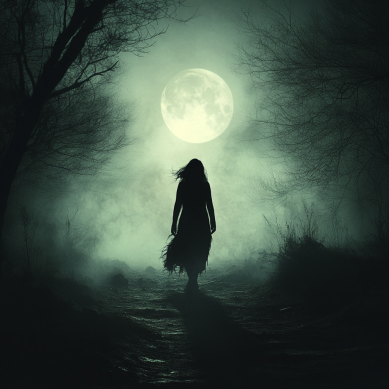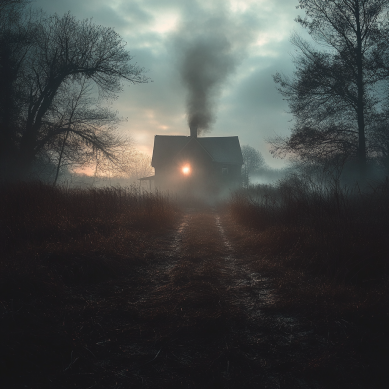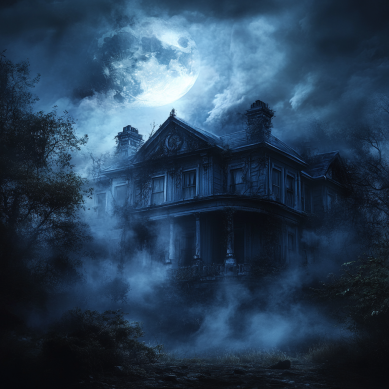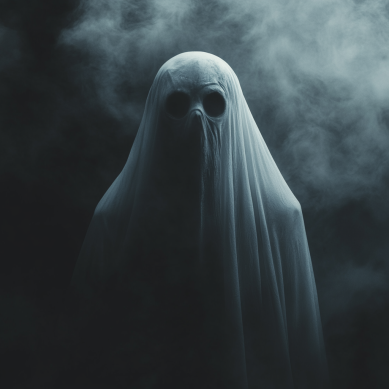Disclaimer: This post contains affiliate links. This means I may earn a commission should you choose to sign up for a program or make a purchase using my link.
Horror fiction has a unique ability to elicit intense emotions, pushing readers beyond their comfort zones and into the depths of fear, suspense, and terror. Unlike other genres, horror appeals to our primordial instincts. Our deep-seated fears have existed since our ancestors gathered around campfires to tell stories about what lurks in the shadows. Writing horror is more than blood and gore; it’s about setting the tone, tapping into universal fears, and playing on the audience’s psychological and emotional responses.
Genuine dread in horror fiction requires a delicate mix of story, character development, setting, and tension. In this blog post, we will look at how to write horror fiction that captures readers’ attention, haunts their thoughts, and remains long after turning the last page.
Disclaimer: This post contains affiliate links. This means I may earn a commission should you choose to sign up for a program or make a purchase using my link.

1. Understanding the Core Elements of Horror Fiction
Before diving into the writing process, it is crucial to understand what makes horror fiction effective. Horror is a versatile genre, but it always centers around one core goal: to evoke fear. This fear can take many forms, from the subtle dread of psychological horror to the visceral shock of body horror.
Key Elements of Horror Fiction:
- Atmosphere and Mood: Horror relies heavily on atmosphere to create a sense of dread and unease. This can be achieved through detailed descriptions, unsettling imagery, and pacing that allows the tension to build gradually.
- Fear and Suspense: Fear is the cornerstone of horror. Effective horror fiction does not just scare readers with jump scares or gore; it builds a sense of suspense, keeping readers on edge as they anticipate what will happen next.
- Character Vulnerability: Horror works best when readers care about the characters. By making characters vulnerable—either physically, psychologically, or emotionally—you heighten the stakes and amplify the fear factor.
- The Unknown: Fear of the unknown is a powerful tool in horror writing. Keeping certain aspects of the threat hidden or ambiguous allows readers’ imaginations to fill in the blanks, often creating something even more terrifying than what is explicitly described.
- Themes of Isolation and Helplessness: Whether it is a lone character trapped in a haunted house or a small town cut off from the world, themes of isolation and helplessness amplify the horror by making characters feel vulnerable and readers feel claustrophobic.
By understanding these core elements, you can create a solid foundation for your horror story and ensure it taps into the universal fears and anxieties of your readers.

2. Choosing Your Subgenre: Types of Horror Fiction
Horror is a broad genre that encompasses many different subgenres, each with its own unique style, tone, and approach to evoking fear. Choosing a subgenre can help you focus your story and target specific elements of horror.
Common Horror Subgenres:
- Psychological Horror: Focuses on the internal fears and mental states of characters. Stories often explore themes of madness, paranoia, and unreliable perception. Think of Shirley Jackson’s The Haunting of Hill House or Stephen King’s The Shining.
- Gothic Horror: Combines elements of romance, mystery, and horror, often set in gloomy, antiquated locations like castles or manor houses. The emphasis is on atmosphere and a creeping sense of dread. Examples include Mary Shelley’s Frankenstein and Bram Stoker’s Dracula.
- Supernatural Horror: Involves ghosts, demons, and otherworldly entities that defy the laws of nature. This subgenre often intersects with religious themes or folklore. The Exorcist by William Peter Blatty is a prime example.
- Body Horror: Explores the fear of physical transformation, mutilation, or the grotesque. It taps into deep-seated anxieties about the fragility and mutability of the human body. Works by Clive Barker, such as The Hellbound Heart, are classic examples.
- Cosmic Horror: Pioneered by H.P. Lovecraft, cosmic horror is centered around the idea that humans are insignificant in a universe filled with ancient, malevolent entities. It relies on existential dread and the fear of the incomprehensible.
- Slasher Horror: Known for its visceral violence, this subgenre often features a relentless killer stalking a group of people, with a focus on suspense and shock. Examples include Halloween by John Carpenter (as a film) and the Final Girls novel by Riley Sager.
- Survival Horror: Centers on the struggle to survive in the face of overwhelming odds, such as a zombie apocalypse or alien invasion. It combines elements of action, suspense, and psychological horror. Max Brooks’ World War Z is a well-known example.
Choosing a subgenre will help you focus on specific fears and horror techniques, guiding how you develop your plot, characters, and setting.
3. Building a Tense and Unsettling Atmosphere
Atmosphere is one of the most critical components of horror fiction. It sets the tone for your story and helps create a pervasive sense of dread and unease that keeps readers engaged.
Tips for Crafting a Powerful Atmosphere:
1. Use Descriptive Language and Sensory Detail
The more vividly you describe your setting and scenes, the more immersive your story will be. Focus on the five senses—what your characters see, hear, smell, touch, and taste can all contribute to an unsettling atmosphere.
- Visual Imagery: Use detailed visual descriptions to paint a picture of the setting. Shadows that move where they should not, peeling wallpaper that resembles a face, or flickering lights that seem to grow dimmer can all create a visual sense of unease.
- Sound and Silence: What is heard and what is not heard are equally important. The creaking of a floorboard, the distant howl of the wind, or the eerie silence that follows can all contribute to the tension. Silence, in particular, can be unnerving, making readers feel like something is lurking just out of sight.
- Smell and Touch: Smells like mildew, rotting wood, or something more sinister can evoke discomfort. Similarly, the sensation of a cold draft or the rough texture of a wall can help readers feel what the characters are experiencing.
2. Build Slow-Burning Tension
True terror often comes from anticipation rather than immediate action. A slow buildup allows the reader’s imagination to take over, filling in gaps with their own fears.
- Pacing: Control the pacing of your story carefully. Alternate between slow, tension-building scenes and bursts of action or revelation to keep readers on edge. Do not be afraid to let the story simmer, allowing the dread to build naturally.
- Foreshadowing: Use subtle foreshadowing to hint at what is to come. This can be as simple as a seemingly innocuous event, like a door that never stays shut or a recurring nightmare. Planting these seeds early on keeps readers guessing and anxious.
3. Create an Unreliable Setting
A setting that seems to shift and change, or one that has a malevolent presence, can be incredibly disorienting for both characters and readers.
- Play with Reality: Is the house haunted, or is it the protagonist’s mind unraveling? Keeping the line between reality and hallucination blurry adds to the fear factor. This ambiguity keeps readers questioning what is real and what is not.
- Limitations of the Setting: A setting that traps characters, such as a locked room, an isolated cabin, or a labyrinthine forest, heightens the feeling of claustrophobia and helplessness. The inability to escape amplifies tension.

4. Developing Deep, Relatable Characters
Horror is most effective when readers care about the characters. If your audience feels emotionally invested in the characters’ survival or sanity, the stakes are automatically higher.
Tips for Creating Relatable Characters in Horror Fiction:
1. Give Characters Flaws and Fears
Perfect characters do not belong in horror fiction. Characters with flaws, vulnerabilities, and fears are more believable and relatable, and their reactions to terrifying situations are more compelling.
- Personal Fears: What does your character fear the most? Fear of loss, fear of the dark, or fear of the unknown can all be exploited within your story. The antagonist or threat should exploit these personal fears, making the horror feel even more intimate.
- Complex Motivations: Characters should have strong, realistic motivations for their actions, even in the face of terror. Why do they enter the haunted house? Why do they not leave when they have the chance? Providing believable reasons helps maintain suspension of disbelief.
2. Focus on Psychological Depth
The inner turmoil of your characters can be just as terrifying as the external threats they face. Use internal conflict to build tension and reveal character development.
- Character Arcs: Characters should not remain static in horror fiction. Whether they descend into madness, find inner strength, or succumb to their fears, their journey should be dynamic and engaging.
- Unreliable Narrators: A character who cannot trust their own senses or memories can be a powerful tool in horror. This technique keeps readers off-balance and adds layers of psychological depth to the story.
3. Develop Believable Relationships
Relationships can be a source of tension, motivation, and vulnerability in horror fiction. The fear of losing a loved one, betrayal, or even the dissolution of a friendship can be just as terrifying as any external monster.
- Group Dynamics: If your story involves a group of characters, explore the dynamics within the group. Paranoia, mistrust, and conflicting agendas can heighten the tension, as seen in films like The Thing or novels like The Mist by Stephen King.
- Emotional Stakes: Make sure the emotional stakes are clear. If a character is risking their life to save someone, the reader should understand why and feel the weight of that decision.
5. Crafting a Compelling Plot with High Stakes
A horror plot should be more than just a series of scares. It needs to be a tightly woven narrative that builds tension, develops characters, and keeps readers turning the page.
Tips for Structuring a Horror Plot:
1. Start with a Hook
Your story should grab readers from the very first page. Whether it is a chilling prologue, a mysterious event, or a shocking first scene, the opening should set the tone and establish a sense of unease.
- Create Immediate Tension: Start with something unsettling that hints at the horror to come. This could be a bizarre disappearance, a strange sound in the night, or an eerie discovery.
- Pose an Intriguing Question: Give readers a mystery they want to see solved. This could be a cursed object, a missing person, or a strange anomaly that defies explanation.
2. Build to a Climax with Rising Tension
Effective horror builds tension incrementally, leading to a climactic confrontation with the source of the terror.
- Escalation of Threats: The threats should escalate over the course of the story. Start with subtle, eerie occurrences and build up to more direct confrontations. Each escalation should feel earned and natural.
- Plot Twists and Turns: Keep readers guessing by introducing unexpected twists. Perhaps the true antagonist is not who they seem, or the nature of the threat changes midway through the story. Surprising your audience can keep them engaged and on edge.
3. End with Impact
A great horror story leaves a lasting impression. The ending should feel inevitable yet surprising, and it should resonate emotionally with readers.
- Avoid Overly Neat Resolutions: Horror does not always require a happy ending. Sometimes, leaving some questions unanswered or suggesting that the horror is not truly over can be far more unsettling.
- Thematic Closure: Ensure that the ending ties back to the story’s central themes. If your story is about the fear of isolation, the resolution should reinforce that theme in some way, whether through catharsis or further despair.

6. Using Horror Tropes Effectively
Horror fiction comes with its own set of tropes and conventions, from haunted houses to cursed objects. These elements are popular because they work, but it is important to use them in fresh and innovative ways.
Tips for Using Horror Tropes:
1. Subvert Expectations
Readers who are familiar with the horror genre will have certain expectations. Subverting these expectations can make your story feel fresh and original.
- Twist Familiar Tropes: Instead of following a well-worn path, take a familiar trope and twist it. For instance, inverting the “final girl” trope or making the “haunted house” story a metaphor for something deeper.
- Play with Reader Assumptions: Lead readers to believe they know where the story is heading, then take them in a different direction. This keeps the experience unpredictable and exciting.
2. Incorporate Cultural and Psychological Depth
Draw on cultural fears, myths, and folklore to give your horror story more depth and resonance. This can add layers of complexity and authenticity.
- Use Folklore and Urban Legends: Stories rooted in local folklore or urban legends can feel more authentic and engaging. Research the myths and legends that exist within different cultures to inspire unique horror elements.
- Explore Societal Fears: Reflect contemporary anxieties and societal fears in your story. Whether it is the fear of technology, the unknown, or the collapse of societal norms, grounding your horror in real-world concerns can make it even more terrifying.
7. Balancing Subtle Horror with Shock Value
Effective horror often lies in the balance between subtlety and shock. Too much of one can make the story feel either dull or overly sensational.
Tips for Balancing Subtlety and Shock:
1. Use Shock Sparingly
Shocking moments—sudden violence, unexpected deaths, or jump scares—can be effective tools, but they should not be overused.
- Build Up to Shocks: Shocking moments should feel earned. Build tension leading up to a shock, making it feel like a natural progression rather than a cheap trick.
- Make Shocks Meaningful: Ensure that shocking moments have consequences and drive the plot or character development forward. Gratuitous violence or gore for its own sake can desensitize readers and diminish the impact.
2. Lean Into Subtle Horror for a Lasting Effect
Subtle horror can be more effective in creating a lasting impact. It lingers in the reader’s mind, creeping back in when they least expect it.
Create Unease Through Detail: Use small, unsettling details that seem off or out of place. These little touches can build an overarching sense of dread without overtly scaring the reader.
Imply More Than You Show: Sometimes, what is left unsaid is more terrifying than what is described. Allow readers’ imaginations to fill in the blanks. The unknown is often scarier than the known.

Crafting Horror That Haunts Readers
Writing horror fiction is an art that combines psychological insight, atmospheric writing, and a deep understanding of fear. By mastering the elements of atmosphere, character, plot, and pacing, you can craft stories that chill readers to the bone and keep them up at night.
Remember that true horror lies in the unknown, in the things we fear but cannot understand. Whether you are writing a ghost story that taps into deep-seated childhood fears or a psychological horror that explores the darkest corners of the human mind, the goal is to create an experience that resonates and haunts your readers long after they finish the last page.
Now it is your turn! Start experimenting with your horror ideas, and do not forget to share your comments or spine-chilling concepts with fellow writers and readers. Together, we can explore the darkest corners of fiction and craft stories that linger in the shadows. As always, Happy Writing!
Other Horror Posts
- How to Build Complex Characters in Dark Fantasy and Horror Fiction.
- Jump Scare Techniques for Horror Writers: How to Time It Right
- Why Relatable Characters Make Horror More Terrifying, and How to Write Them
- 30 Scary Supernatural Prompts to Bring Horror Stories to Life
- How to Make Your Horror Setting Feel Like a Character
- Mastering Monster Creation: How to Write Truly Frightening Horror Creatures
- Unlock Fear: 20 Psychological Horror Prompts to Unravel the Mind

Newsletter Sign-Up